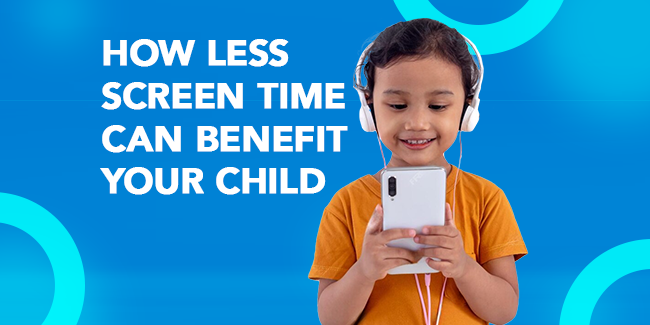How Less Screen Time Can Benefit Your Child
In an age where digital devices have become an integral part of our daily lives, the impact of screen time on children’s health has emerged as a topic of concern for parents, educators, and health professionals alike. With easy access to smartphones, tablets, and computers, today’s children are spending more time online than ever before. While technology offers educational benefits and interactive learning opportunities, excessive screen time and digital exposure can have adverse effects on both physical and mental health. This article explores the impact of screen time on children and provides strategies to promote healthier digital habits.
Understanding the Effects of Excessive Screen Time on Health
The American Academy of Pediatrics (AAP) recommends limiting screen time for children aged 2 to 5 to one hour per day, while older children should prioritize screen-free activities such as play, exercise, and sleep. However, with the surge of online learning and the growing prevalence of social media, many children far exceed these recommendations. Studies show that children aged 8-18 years spend an average of 7 hours per day on screens, excluding time spent on schoolwork.
Physical Health Implications
Prolonged screen time has been associated with various physical health issues in children. Eye strain, headaches, and blurred vision are common symptoms resulting from excessive screen use, a condition known as Digital Eye Strain (DES) or Computer Vision Syndrome. Furthermore, a sedentary lifestyle linked to extended screen time contributes to childhood obesity. According to a study by the World Health Organization (WHO), childhood obesity rates have tripled since the 1970s, and the lack of physical activity due to screen use is a significant factor.
Mental Health and Behavioral Concerns
Excessive digital exposure has a profound impact on children’s mental health as well. Studies have linked high levels of screen time with an increased risk of anxiety, depression, and attention problems. The constant influx of information and entertainment can overwhelm young minds, affecting their ability to concentrate and process emotions. Additionally, social media platforms can expose children to cyberbullying and feelings of inadequacy due to unrealistic comparisons, leading to low self-esteem.
Building Digital Resilience
Given that screens are now an unavoidable aspect of modern childhood, it’s crucial for parents and caregivers to guide children towards healthy digital habits and build resilience to the potential negative impacts of technology. Here are some evidence-based strategies:
1. Establish Screen-Free Zones and Times
Creating screen-free zones, such as the dining room or bedroom, helps set boundaries and encourages face-to-face interaction and family bonding. Additionally, implementing screen-free times—like during meals and the hour before bedtime—can improve sleep quality and reduce dependence on devices.
2. Encourage Active Screen Time
Not all screen time is detrimental. Encouraging children to engage in educational games, interactive storytelling, or coding programs can turn passive screen consumption into an active learning experience. This approach fosters critical thinking, creativity, and problem-solving skills.
3. Promote Physical Activity
Incorporate physical activities and outdoor play as part of the daily routine to balance screen time. Activities such as cycling, playing sports, or even simple exercises at home can mitigate the negative physical effects of prolonged screen exposure.
4. Model Healthy Digital Habits
Children often mimic the behavior of adults around them. By modeling healthy digital habits—such as limiting screen use, prioritizing offline activities, and practicing mindfulness—parents can influence their children’s approach to technology in a positive way.
5. Teach Digital Literacy and Safety
Educating children about responsible digital behavior, the importance of privacy, and the risks of cyberbullying equips them to navigate the online world safely. Digital literacy programs can also enhance critical thinking and enable children to differentiate between credible and misleading content.
Moving Forward: A Balanced Approach
While the digital world is here to stay, finding a balance between screen time and offline activities is key to promoting children’s health and well-being. Encouraging healthy digital habits from a young age can help build resilience, allowing children to reap the benefits of technology without succumbing to its pitfalls. Parents, educators, and health professionals must work together to create an environment where technology serves as a tool for growth rather than a source of harm.













